How To Give Your Story “Heart”
How to Give Your Story “Heart”
Here’s where things get fluffy. This is the moment you unleash your feelings, tap into your inner light, and weep onto the page, using your sparkling tears as ink. Ready?

Edna would never allow us to do that. And that’s good, because contrary to conventional wisdom, that’s not how you give your story heart. We’re going to do it the real way.
So if it isn’t raw emotion, what is “heart”?
1) It’s what your character NEEDS (not wants).
2) It’s the HIDDEN STORYLINE.
3) It’s what you want to TEACH.
Those sound intimidating, I know. But if you don’t treat it like a mystical magic, it’s very doable.
So, what do those mean?
1) NEED =
Your character has flaws that are ruining their life and future, right? Flaws in their heads that only hurt themselves, flaws in their characters that hurt other people. Something is missing within them, something they don’t understand, something they need to learn. Once they realize their flaws, and learn the thing that will overcome those flaws, their lives will be saved.
Take Mr Fredrickson from Up. He’s so grumpy and stubbornly stuck in the past, he’s willing to leave a small child clinging to the porch of his flying house, rather than let him into his life.

He needs to learn that in order to live a fulfilling life again, he must let go of the past, and go have another adventure. Which Ellie helps him learn.

Great. Now I’m crying.
2) HIDDEN STORYLINE =
It’s what the story is really about. The journey going on below the action-y surface. It’s your character’s inner change from one kind of person to a (hopefully) better kind. The reader believes the story is about the tangible goal, and the actions taken to reach it — the surface. Yet inwardly, they’re processing the hero’s inner journey too. It’s sneakily hidden from them.
On the surface, Hamilton is about a revolution and the founding of a nation.
Underneath all that, it’s about a guy learning what a worthwhile legacy really is, and how to build one.
3) TEACHING =
Storytelling is the most powerful teaching method ever devised. Scientifically speaking, teaching is the purpose of stories, whether we like it or not. This fact usually makes people react like Gollum when approached by nasty hobbitses.

“Moralizing, precious? We hates it!”
Which is a reflex aversion that I understand, and have shared in the past. Books and movies that teach something positive are scorned and mocked in the world of “high literature” too. But when I thought about what stories have done for me, and why they were capable of it, my opinion changed.
Tangled saved my life. If I had never seen that movie, I would still be in a horrible cult-like situation which I’d been trapped in for twelve years.
Narnia helped me escape depression.
The Harry Potter books were my home and my friends when I didn’t have either.
And those are all stories with strong hearts.
Why wouldn’t I want to create stories that could possibly help someone, like I was helped? Why would I let “avoid teaching at all costs” become my ultimate goal? (When really, that’s another way of saying “be pretentious and egotistical”?)
Nope. I’m choosing to write things that people will call schmaltzy and childish – but maybe life saving for another kid.
(I said I wasn’t going to get emotional. Sorry Edna.)
So, how do you figure out the heart of your story?
Answer these questions: — What does your character need to learn, to stop ruining their own life? — What do YOU want to say?
Keep reading
More Posts from Kiminitodokestuff and Others
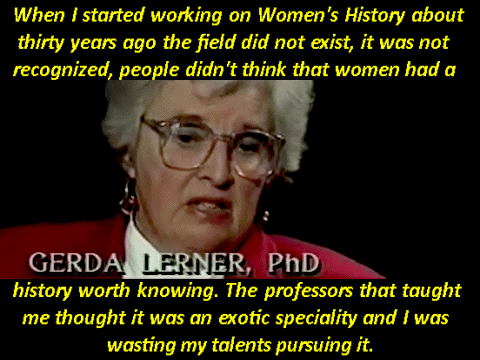
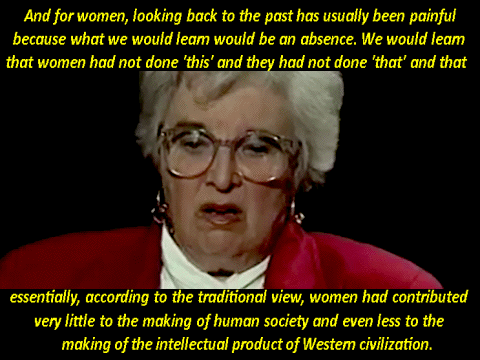
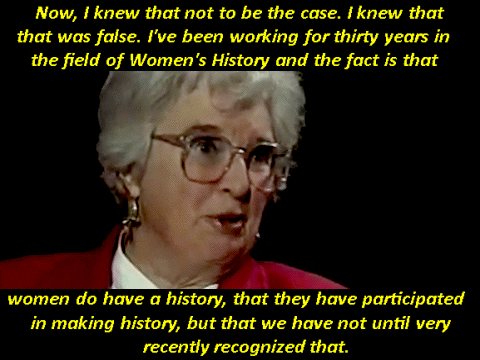
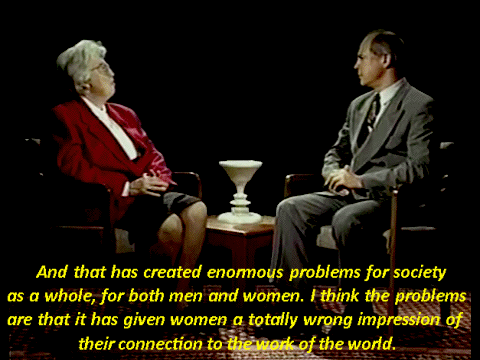

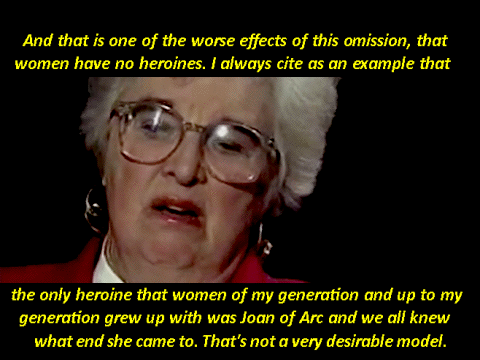
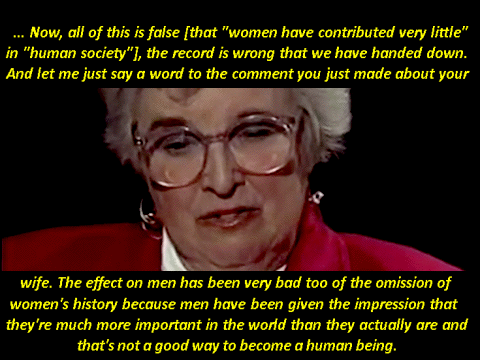
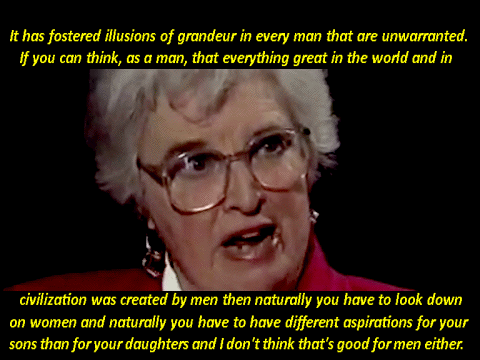
Gerda Lerner (1920-2013) , former Robinson Edwards Professor Emerita of History at the University of Wisconsin-Madison.
Gerda Lerner (1920-2013) Women and History (excerpt) -- A Thinking Allowed DVD w/ Jeffrey Mishlove


The best way to fight again and old man when he’s harassing your girl :’DDD Love this manga, too!! (Oh, and the mangaka, too, of course. She makes incredible serieses) >Chou yo Hana yo

Some writing sins to keep in mind when writing your novel!
BUT, as regards women lawyers, I say: this focus on women lawyers’ attire is driven (once again, as in so many arenas) by the need for men to control women (and yes, women will police other women for them, as in the stilletto example above). Our culture still judges women, even the most powerful women, by a completely different standard (one inferior) to men: Diane Sawyer asking Hillary Clinton if she can be both a grandmother and president (did anyone ask Dwight Eisenhower that question when he was running?), the New York Times firing Jill Abrahamson because of her “abrasive” management style (did anyone fire Abe Rosenthal for being too abrasive?).
The fact of the matter is, professional women who have spent three years and tens of thousands of dollars are smart enough to pick out their own wardrobes without help. Women usually are aware of how they look, and what effect their clothes are intended to have. To those who complain about women’s courtroom attire, I say: you may not agree with her choices, you may not like them… but unless you really think a woman did not intend to present the appearance she does (there’s a run in the back of her tights, she has chalk on the seat of her pants, she is missing a button, or her skirt is hiked up in back) then keep your thoughts to yourself. Why not focus your energy on, oh… something that matters?
I’m curious what fellow lawblrs have heard as ‘advice’ regarding their attire. I’ve heard on several occasions not to wear skirts to interviews, as it makes us appear too ‘feminine.’
Your Character’s Personality
Personality is the most important thing about your character.
So, whenever I see character sheets, most people just put a little paragraph for that section. If you’re struggling and don’t know what your character should say or do, what decisions they should make, I guarantee you that this is the problem.
You know your character’s name, age, race, sexuality, height, weight, eye color, hair color, their parents’ and siblings’ names. But these are not the things that truly matter about them.
Traits:
pick traits that don’t necessarily go together. For example, someone who is controlling, aggressive and vain can also be generous, sensitive and soft-spoken. Characters need to have at least one flaw that really impacts how they interact with others. Positive traits can work as flaws, too. It is advised that you pick at least ten traits
people are complex, full of contradictions, and please forgive me if this makes anyone uncomfortable, but even bullies can be “nice” people. Anyone can be a “bad” person, even someone who is polite, kind, helpful or timid can also be narcissistic, annoying, inconsiderate and a liar. People are not just “evil” or “good”
Beliefs:
ideas or thoughts that your character has or thinks about the world, society, others or themselves, even without proof or evidence, or which may or may not be true. Beliefs can contradict their values, motives, self-image, etc. For example, the belief that they are an awesome and responsible person when their traits are lazy, irresponsible and shallow. Their self-image and any beliefs they have about themselves may or may not be similar/the same. They might have a poor self-image, but still believe they’re better than everybody else
Values:
what your character thinks is important. Usually influenced by beliefs, their self-image, their history, etc. Some values may contradict their beliefs, wants, traits, or even other values. For example, your character may value being respect, but one of their traits is disrespectful. It is advised you list at least two values, and know which one they value more. For example, your character values justice and family. Their sister tells them she just stole $200 from her teacher’s wallet. Do they tell on her, or do they let her keep the money: justice, or family? Either way, your character probably has some negative feelings, guilt, anger, etc., over betraying their other value
Motives:
what your character wants. It can be abstract or something tangible. For example, wanting to be adored or wanting that job to pay for their father’s medication. Motives can contradict their beliefs, traits, values, behavior, or even other motives. For example, your character may want to be a good person, but their traits are selfish, manipulative, and narcissistic. Motives can be long term or short term. Everyone has wants, whether they realize it or not. You can write “they don’t know what they want,” but you should know. It is advised that you list at least one abstract want
Recurring Feelings:
feelings that they have throughout most of their life. If you put them down as a trait, it is likely they are also recurring feelings. For example, depressed, lonely, happy, etc.
Self Image:
what the character thinks of themselves: their self-esteem. Some character are proud of themselves, others are ashamed of themselves, etc. They may think they are not good enough, or think they are the smartest person in the world. Their self-image can contradict their beliefs, traits, values, behavior, motives, etc. For example, if their self-image is poor, they can still be a cheerful or optimistic person. If they have a positive self-image, they can still be a depressed or negative person. How they picture themselves may or may not be true: maybe they think they’re a horrible person, when they are, in fact, very considerate, helpful, kind, generous, patient, etc. They still have flaws, but flaws don’t necessarily make you a terrible person
Behavior:
how the character’s traits, values, beliefs, self-image, etc., are outwardly displayed: how they act. For example, two characters may have the trait “angry” but they all probably express it differently. One character may be quiet and want to be left alone when they are angry, the other could become verbally aggressive. If your character is a liar, do they pause before lying, or do they suddenly speak very carefully when they normally don’t? Someone who is inconsiderate may have issues with boundaries or eat the last piece of pizza in the fridge when they knew it wasn’t theirs. Behavior is extremely important and it is advised you think long and hard about your character’s actions and what exactly it shows about them
Demeanor:
their general mood and disposition. Maybe they’re usually quiet, cheerful, moody, or irritable, etc.
Posture:
a secondary part of your character’s personality: not as important as everything else. It is advised you fill this out after. Posture is how the character carries themselves. For example, perhaps they swing their arms and keep their shoulders back while they walk, which seems to be the posture of a confident person, so when they sit, their legs are probably open. Another character may slump and have their arms folded when they’re sitting, and when they’re walking, perhaps they drag their feet and look at the ground
Speech Pattern:
a secondary part of your character’s personality: not as important as everything else. It is advised you fill this out after. Speech patterns can be words that your character uses frequently, if they speak clearly, what sort of grammar they use, if they have a wide vocabulary, a small vocabulary, if it’s sophisticated, crude, stammering, repeating themselves, etc. I personally don’t have a very wide vocabulary, if you could tell
Hobbies:
a secondary part of your character’s personality: not as important as everything else. It is advised you fill this out after. Hobbies can include things like drawing, writing, playing an instrument, collecting rocks, collecting tea cups, etc.
Quirks:
a secondary part of your character’s personality, not as important as everything else. It is advised you fill this out after. Quirks are behaviors that are unique to your character. For example, I personally always put my socks on inside out and check the ceiling for spiders a few times a day
Likes:
a secondary part of your character’s personality, not as important as everything else. It is advised you fill this out after. Likes and dislikes are usually connected to the rest of their personality, but not necessarily. For example, if your character likes to do other people’s homework, maybe it’s because they want to be appreciated
Dislikes:
a secondary part of your character’s personality, not as important as everything else. It is advised you fill this out after. Likes and dislikes can also contradict the rest of their personality. For example, maybe one of your character’s traits is dishonest, but they dislike liars
History:
your character’s past that has key events that influence and shape their beliefs, values, behavior, wants, self-image, etc. Events written down should imply or explain why they are the way they are. For example, if your character is distrustful, maybe they were lied to a lot by their parents when they were a child. Maybe they were in a relationship for twenty years and found out their partner was cheating on them the whole time. If their motive/want is to have positive attention, maybe their parents just didn’t praise them enough and focused too much on the negative
On Mental and Physical Disabilities or Illnesses
if your character experienced a trauma, it needs to have an affect on your character. Maybe they became more angry or impatient or critical of others. Maybe their beliefs on people changed to become “even bullies can be ‘nice’ people: anyone can be a ‘bad’ person”
people are not their illness or disability: it should not be their defining trait. I have health anxiety, but I’m still idealistic, lazy, considerate, impatient and occasionally spiteful; I still want to become an author; I still believe that people are generally good; I still value doing what make me feel comfortable; I still have a positive self-image; I’m still a person. You should fill out your character’s personality at least half-way before you even touch on the possibility of your character having a disability or illness
Generally everything about your character should connect, but hey, even twins that grew up in the same exact household have different personalities; they value different things, have different beliefs. Maybe one of them watched a movie that had a huge impact on them.
Not everything needs to be explained. Someone can be picky or fussy ever since they were little for no reason at all. Someone can be a negative person even if they grew up in a happy home.
I believe this is a thought out layout for making well-rounded OCs, antagonists and protagonists, whether they’re being created for a roleplay or for a book. This layout is also helpful for studying Canon Characters if you’re looking to accurately roleplay as them or write them in fanfiction or whatever.
I’m really excited to post this, so hopefully I didn’t miss anything important…
If you have any questions, feel free to send a message.
- Chick
-
 catamoth liked this · 1 year ago
catamoth liked this · 1 year ago -
 newdawnhorizon reblogged this · 1 year ago
newdawnhorizon reblogged this · 1 year ago -
 raccoonwarlock reblogged this · 1 year ago
raccoonwarlock reblogged this · 1 year ago -
 subaerial-dweller liked this · 2 years ago
subaerial-dweller liked this · 2 years ago -
 yanderismo liked this · 2 years ago
yanderismo liked this · 2 years ago -
 watermeezer liked this · 2 years ago
watermeezer liked this · 2 years ago -
 newdawnhorizon reblogged this · 2 years ago
newdawnhorizon reblogged this · 2 years ago -
 aliyah1919 liked this · 2 years ago
aliyah1919 liked this · 2 years ago -
 celestialmistress15 liked this · 3 years ago
celestialmistress15 liked this · 3 years ago -
 stitch-flo liked this · 3 years ago
stitch-flo liked this · 3 years ago -
 sleepysashimi04 liked this · 3 years ago
sleepysashimi04 liked this · 3 years ago -
 somequirkyname-blog liked this · 4 years ago
somequirkyname-blog liked this · 4 years ago -
 cokketea liked this · 4 years ago
cokketea liked this · 4 years ago -
 field-of-rushes liked this · 4 years ago
field-of-rushes liked this · 4 years ago -
 mizuno-marmalade liked this · 5 years ago
mizuno-marmalade liked this · 5 years ago -
 louiveee reblogged this · 5 years ago
louiveee reblogged this · 5 years ago -
 dancing-chaos liked this · 5 years ago
dancing-chaos liked this · 5 years ago -
 dregonsnork liked this · 5 years ago
dregonsnork liked this · 5 years ago -
 kayinspo reblogged this · 5 years ago
kayinspo reblogged this · 5 years ago -
 minnie-thriver liked this · 5 years ago
minnie-thriver liked this · 5 years ago -
 ibleb liked this · 5 years ago
ibleb liked this · 5 years ago -
 xxbasketcasexx liked this · 6 years ago
xxbasketcasexx liked this · 6 years ago -
 dritameader liked this · 6 years ago
dritameader liked this · 6 years ago -
 ghoststew reblogged this · 6 years ago
ghoststew reblogged this · 6 years ago -
 sugar-creates reblogged this · 6 years ago
sugar-creates reblogged this · 6 years ago -
 solcomfortssouls liked this · 6 years ago
solcomfortssouls liked this · 6 years ago -
 awesome-on-earth liked this · 6 years ago
awesome-on-earth liked this · 6 years ago -
 naka-mushoku reblogged this · 6 years ago
naka-mushoku reblogged this · 6 years ago -
 naka-mushoku liked this · 6 years ago
naka-mushoku liked this · 6 years ago -
 veg-jie liked this · 6 years ago
veg-jie liked this · 6 years ago -
 hearteyesmofos reblogged this · 6 years ago
hearteyesmofos reblogged this · 6 years ago -
 littlegreenlillypad liked this · 6 years ago
littlegreenlillypad liked this · 6 years ago -
 blackmoonwhitestar liked this · 6 years ago
blackmoonwhitestar liked this · 6 years ago -
 momokat liked this · 6 years ago
momokat liked this · 6 years ago -
 priestdracula liked this · 6 years ago
priestdracula liked this · 6 years ago -
 skye-arts reblogged this · 6 years ago
skye-arts reblogged this · 6 years ago -
 techgirl611 liked this · 6 years ago
techgirl611 liked this · 6 years ago -
 goldspika liked this · 6 years ago
goldspika liked this · 6 years ago -
 scaredcattystudies liked this · 6 years ago
scaredcattystudies liked this · 6 years ago



